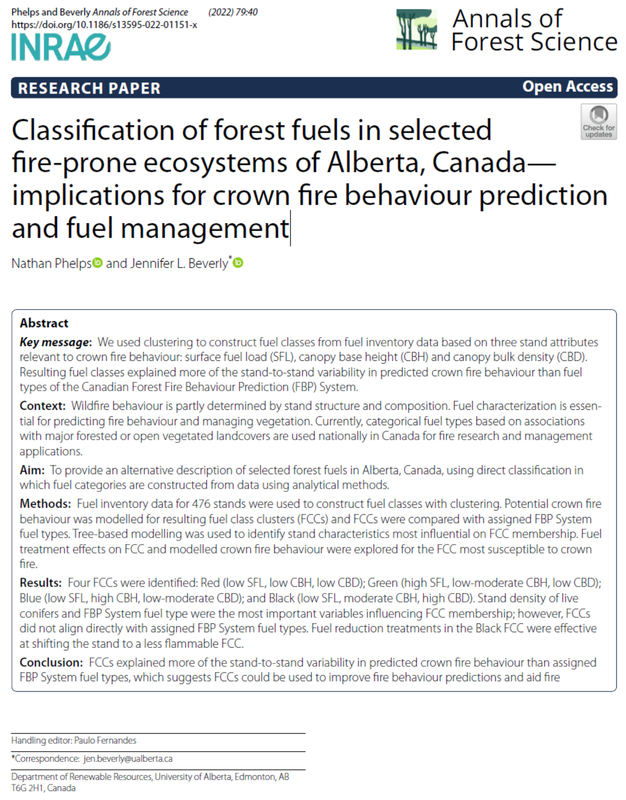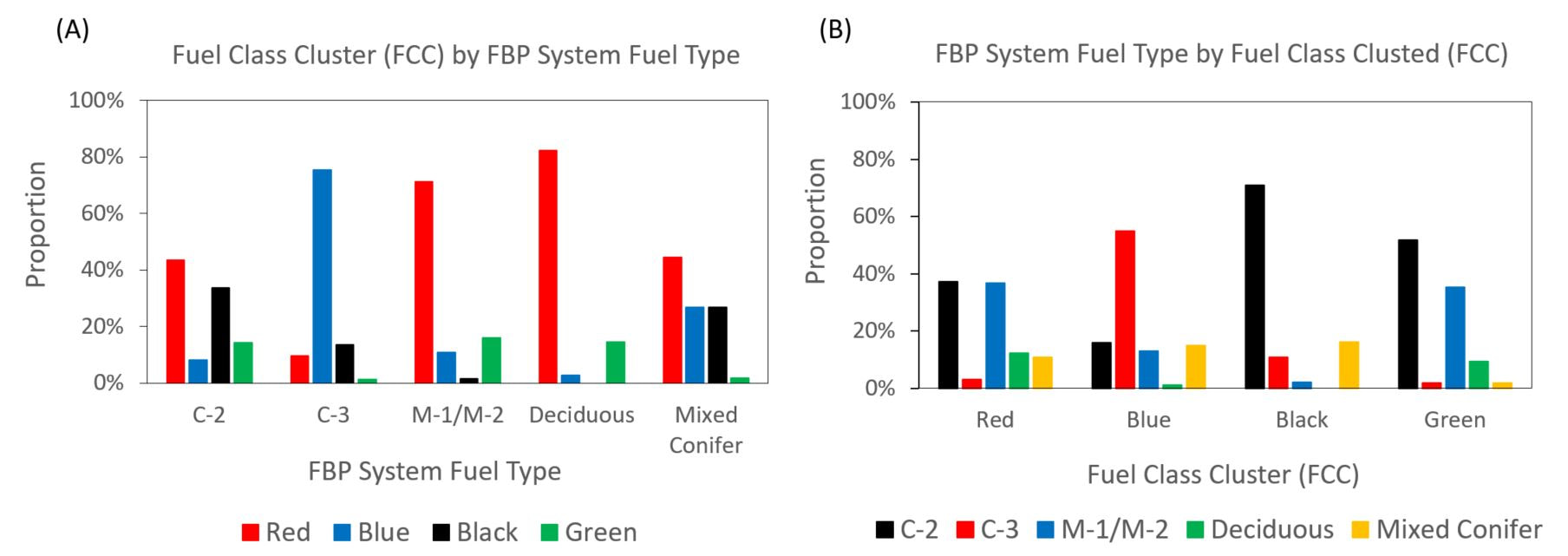|
Forest fuels in Canada are commonly described using the Canadian Forest Fire Behaviour Prediction (FBP) System fuel types. When classifying a forest stand in Canada, there are only 12 different fuel types to choose from, such as "C-3 Mature Jack or Lodgepole Pine" or "C-2 Boreal Spruce" or "M-2 Boreal Mixedwood". Within a given fuel type, natural variations in surface and canopy fuel characteristics that can result due to site conditions, stand development stage and other factors, are largely ignored.
In our study, we considered an alternative approach for classifying forest fuels that more explicitly considers the ways fuels influence wildfire behaviour. To do this, we used data collected in Alberta during a long-term fuel inventory program. First, we cleaned the fuel inventory data to ensure we had field measurement records that were of a quality suitable for research and analysis. The painstaking data cleaning process and final, quality-checked dataset is documented in Phelps et al. (2022). The next step was to use the fuel inventory data for 476 stands in the cleaned dataset to construct fuel classes with clustering. Clustering is a machine learning technique that is used to put similar observations in the same group and dissimilar observations in different groups. We focused on three fuel attributes relevant to crown fires: surface fuel load (SFL), live canopy base height (CBH), and canopy bulk density (CBD). Four fuel class clusters (FCCs) were identified:
The most important variables influencing FCC membership were stand density of the live conifers present and FBP System fuel type; however, FCCs did not align directly with assigned FBP System fuel types (Figures A and B).
Results indicated that potential crown fire behaviour is highly variable, even within the same FBP System fuel type. FCCs also showed us that different stand types, composed of different tree species, can have fuel structures that are similar with respect to their susceptibility to crown fire. Fuel treatments were not a significant determinant of FCC membership; however, fuel treatments conducted in the FCC most conducive to crown fire initiation and active crown fire spread (i.e., the Black FCC) were effective at changing the stand’s fuel class and inhibiting crown fire spread. FCCs are assigned to a given forest stand using field measurements of fuel attributes that are not widely available, due to the time and cost involved. At localized sites, such as an experimental burning project or fuel treatment block, rapid fuel assessment methods could potentially enable assignment of our FCCs through coarse estimates of SFL, CBH, and CBD obtained with hemispherical photography (e.g., Cameron et al. 2021), nadir photography (e.g., Cameron et al. 2022a) or photographic fuel load reference guides. Rapidly evolving remote sensing methods may one day enable broadscale FCC development and mapping across large landscape areas using technologies such as LiDAR to estimate fuel attributes (e.g., Cameron et al. 2022b). The FCCs and associated fuel attributes summarized in this study could also provide useful reference data and potential inputs to new fire behaviour models and fire behaviour modeling studies. |
© 2025 by J. Beverly
Banner photo courtesy Alberta Wildfire - Fire PWF-034 2018
Banner photo courtesy Alberta Wildfire - Fire PWF-034 2018


